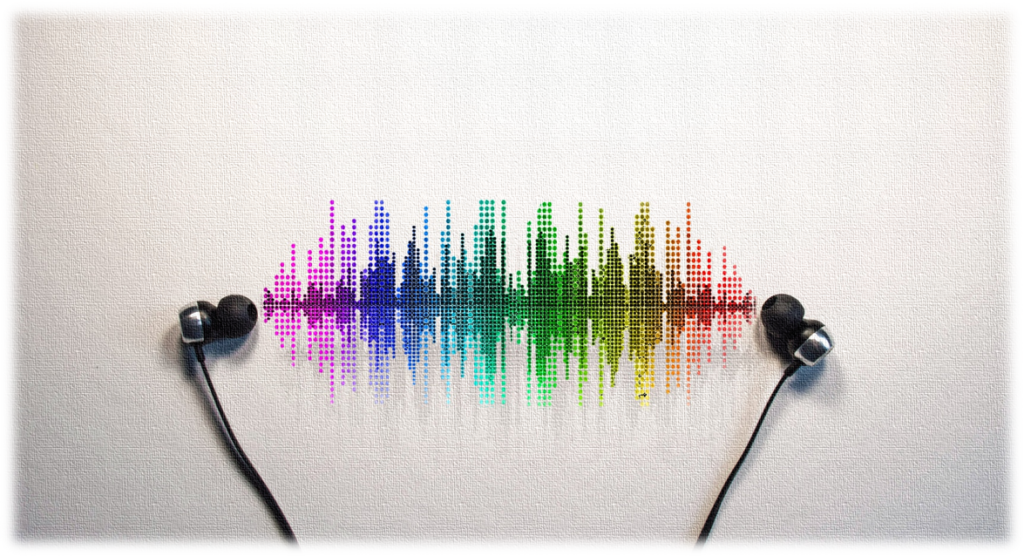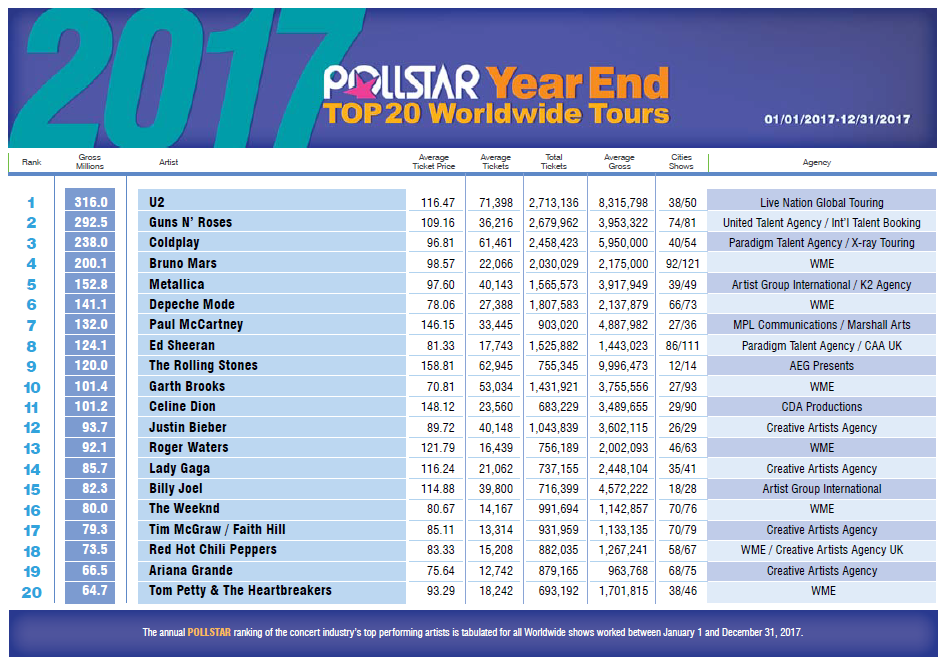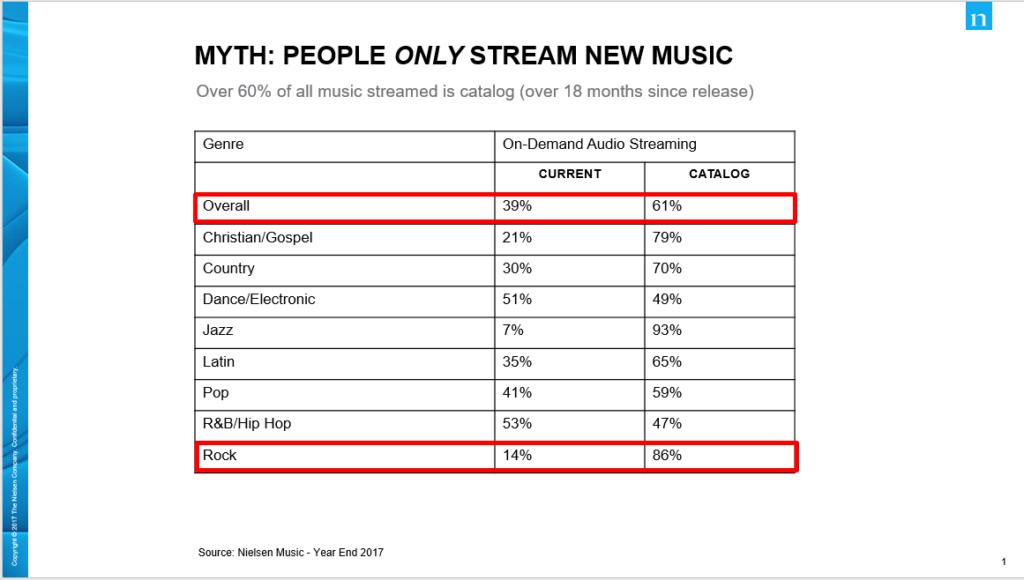 I enjoy my role as “Data Whisperer” – taking available analytics and research and identifying trends and phenomena that impact our industry and our ability to entertain. These days, there’s no shortage of information, research studies, and other sources of information. And yet, we often find ourselves groping to connect those statistical dots to identify trends and changes in the music patterns that are all around us.
I enjoy my role as “Data Whisperer” – taking available analytics and research and identifying trends and phenomena that impact our industry and our ability to entertain. These days, there’s no shortage of information, research studies, and other sources of information. And yet, we often find ourselves groping to connect those statistical dots to identify trends and changes in the music patterns that are all around us.
I think it’s safe to say we’re living through an audio renaissance, evidenced by the sheer number and power of gadgets available to anyone in our society from 7 year-olds to octogenarians. When you consider that devices the size of a pack of cigarettes can store and play back every song ever recorded, it’s no surprise we’re in the middle of an amazing moment in audio consumption. That’s one of the trends we’ll be tracking closely as Paul and I trek through the seemingly endless displays in the Las Vegas Convention Center at CES. We’ll be toting around two dozen broadcast executives in our search for the latest and greatest that will impact our business – and our lives.
But you don’t have to brave the crowds and taxi lines at CES to understand that so much of what’s happening in our space-aged, fast-paced, hi-tech world is actually a retro trip to the past – in some cases, going back decades to satisfy needs deeply embedded in our collective crania.
Exhibit A is Christmas music 2017 – a radio juggernaut that seems to get stronger with age and the weird, unsettling world in which we increasingly live. We won’t know the end result of this year’s wall-to-wall broadcasts of Burl Ives, Brenda Lee, and Bing Crosby. But those names alone and the power of their music 60 and 70 years later in our smartphone and social media world speaks to the awesome force we call by many names – old school, throwbacks, oldies.
I got my PhD in Nostalgia at the College of Classic Rock back in the ’80s. And it’s an education that keeps paying off for me, as well as for hundreds and hundreds of successful radio stations all over the country, as the Classic Rock format continues to perform at a strong pace, now winning over new fans under 40 years old. Of course, they’re way too young to remember this music when it came out. But they’re old enough to know just how good it really is.
And it’s not just here in North America. A great article in the Irish Examiner – “Music has taken a trip down memory lane”- by writer Ed Power crystalizes many of the underpinnings of music’s nostalgia machine – and its impact on commerce. He notes that concert halls are filling up at record rates by nostalgia-infused acts, highlighted by a Guns N’ Roses comeback, the staying power of U2 (a band that’s now 40+ years old), and a Broadway smash that isn’t a musical, but instead is a ’70s rocker named Bruce Springsteen who’s grossing millions on the stage for audiences that just can’t get enough.
How to explain this phenomenon. Power observes, “Today we no longer chase our youth – we chase our childhoods.”
Whether its millions of celebrants trying to recapture the Christmas holidays of their adolescence, aging rockers going back to those good old college days, or Millennials trying to understand what all the fuss is about, music nostalgia shows no signs of stopping.
Look at this almost-finished end of year list from Pollstar of the top-grossing concerts around the world in 2017 – a record year, by the way. Studying where people are spending their entertainment dollars is part of the analysis This Top 20 list of mostly older performers generated $2.64 billion (with a B) in 2017 – up $241 million from the previous year. The concert experience continues to strengthen, bolstered by bygone acts that include U2, Paul McCartney, the Rolling Stones, Guns N’ Roses, Roger Waters, Billy Joel, and Metallica. Even Tom Petty, whose 2017 was tragically cut short by his untimely passing, made the list.

Still, we’re living in a digital world where despite the comeback of vinyl records, streaming continues to dominate our conversations and our ears. What types of music are people streaming, and how does that inform our understanding of the musical world around us?
For answers, there’s Nielsen’s newly released “2017 Year-End Music Report.” It’s loaded with great data that explains what’s happening in the world of music consumption. And it doesn’t take a data head to read these tea leaves.
Here’s a look at one of the key charts, debunking the notion that streaming is solely about new music. In fact, the vast majority – 61% – of streamed music in 2017 is considered “catalog.”
 Now Nielsen Music’s Director/Radio, Haley Jones reminds us that “catalog” is music 18 months or older.
Now Nielsen Music’s Director/Radio, Haley Jones reminds us that “catalog” is music 18 months or older.
But looking at my musical garden – lumped together under “Rock” at the bottom of the chart – shows that nearly nine of every ten songs streamed in the genre are, in fact, old. What does that tell you about the directionality of taste?
(Yes, it would help to see discreet breakouts by narrower “Classic Rock” and “Alternative” genres, but it doesn’t take a weatherman to know which way these musical winds are blowing.)
The chart explains a lot about the evergreen appeal of Classic Rock, but it also sheds light on the state of other formats (hello, Country radio PDs and consultants). When the two biggest formats for streaming new music are Hip-Hop and EDM-flavored, that leaves a lot of formatic real estate dominated by older product.
It’s where people are spending their concert dollars – but perhaps even more importantly, where they’re spending their precious time.
So, when they go back in time to enjoy their favorite music, let’s stop being surprised.
To gain access to Nielsen Music’s insightful report, click here, fill out the form, and download.
- In Radio, You Just Never Know - April 17, 2025
- The Secret To Making A Great Podcast (And Great Radio) - April 16, 2025
- I Read The (Local) News Today, Oh Boy! - April 15, 2025




“Data Whisperer” – Love it, Fred! My Nostalgia PhD came from growing up in NYC and remembering all things broadcast since the ’50s. I’d even DX Joey Reynolds on WKBW and Washington Senators baseball on WTOP from our Yorkville apartment. Listening on the corner of “Fresh & Familiar” with modern, local, connected content is a Full Service Super Hit. It doesn’t cost anything to Scramble the Selector and Advance your Announcers. Classic is also King and Content Connects. Let’s put the NEW in Happy New Year and may all radio boats rise. Best, Clark in Boston. http://www.broadcastideas.com
Thanks for reading our blog, Clark.
As an old curmudgeon, let me just moan about how Guns N Roses (great band) is not Classic Rock. The stations that have moved a few decades “newer” for their classic have lost me. I know. I’m out of the demo they really want. Just moaning here.
Great piece, Fred.
Thanks, Chris. Classic Rock is in the mind of the beholder, of course. GnR is already 30 years old – for a 50+ listener, not in the same league with the Who or Zeppelin. But among Gen Xers, pretty damn classic. Thanks for the kind words.
Wow – this is a GREAT column and these numbers are fascinating. Even in the current heavy genres like EDM and Hip Hop, the split is close to 50/50 and in formats that are very current focused like Country and Pop, the old stuff wins hands down.
I always wanted to have this conversation with you and never had the chance.. Are people really longing for and reaching back for those days in their dorm rooms or pep rallies, or is that just when people grab most of their music? When I’m with friends and they play music, its almost always older stuff from their teens and 20s. But they almost never bring up what they did or anything about the era that produced that music.
Is it possible that most people get comfortable with music and “acquire” it at a certain age and after a point don’t care to add much new stuff? I’ve always thought that classic rock was less about nostalgia and more about really great music that just plain holds up – which might help explain its growth in younger demos.
Whats weird to me is how badly gold based country and hip hop stations do, given how much interest there seems to be in older product when they stream them?
Bob, thanks for the comment and those thoughts. Music as “comfort food” is part of the appeal. But that doesn’t explain 30 year-olds listening to the Doors. I suspect the other thing in place is that while 50+ people like you and me were exposed to all this music at the same time and on the same limited number of sources, today’s “long tail” effect, exacerbated by infinite distribution platforms, means that music discovery is highly fragmented. Even exchanging playlists on Spotify doesn’t make up for the fact we grew up listening to WMMS or WABX, hearing that Canned Heat song pretty much at the same time. Or watching “Ed Sullivan” and seeing the Stones on Sunday night when there was nothing else on.
As for those questions about the failure of hip hop and country to score consistently high ratings like Classic Rock does, is it possible that music was good, but not great enough to transcend time. Thanks again.
We had great affordable live music too.
Yeah, that too. Thanks, Bob.
I’m going to presume, Fred, that you have also noticed that the focus by Classic Hits on the 1980s is beginning to win over under-40s as well.
I’m biased, of course, but I believe your observation explains that as well: “They’re way too young to remember this music when it came out, but they’re old enough to know just how good it really is.”
Practically every day I learn how similar both “Classic” formats are. It’s why I read the blog, and as we start a new year, I thank you for continuing same.
No sweat, KM. It’s amazing how both formats are so “in play” in 2018. The new Nielsen data showing the 2017 totals shows both formats look really, really solid. Classic Rock does especially well among those 18-34s, part of why we’re all smiling. Thanks for the note.
Hey Fred,
Good to see you out here and being relevant.
Yes, retro, but several things strike me. Much of that “old music” was created and performed by real musicians playing real instruments. Loops are certainly one way to make music, but loops are intrinsically different.
Radio as a companion is also something that separates the past from the present; perhaps not as much, but a great presentation from a live announcer, rather than a voice-tracked robot, can also make a palpable difference in how the music is enjoyed. The Ravyns, a group from Baltimore, MD said it very well in their song “Raised On The Radio.” See Below.
Regards,
Ty Ford
1956, when the DJ broke to play us something new
Hearts broke, hearts skipped, and we knew that this made for me and you
When he told us he was lonely he was speaking from the heart
I was much to young to know but I knew it was a start
I was raised on the radio
Raised on the radio
Just an all-american boy
I found my favorite toy
Michelle, Lady Jane, yeah I fell in love with girls I never met
I learned to play guitar while the other boys were busy learning math
But all the simplest equations never add up very far
And all my musical persuasions kept me reaching for the stars
I was raised on the radio
Raised on the radio
Just an all-American boy
I’ve got my favorite toy
I was raised on the radio
Yeah I was raised on the radio
Remembering when times were bad
Love is all we need and love was all we had
1964 when the DJ broke to play us something new…
Raised on the radio
Raised on the radio
Just an all-American boy
I’ve got my favorite toy
I was raised on the radio
Yeah I was raised on the radio
Just like an all-american boy
I’ve got my favorite toy
I was raised on the radio
Raised on the radio
Yes I was raised on the radio
Ty, this is a great comment – and I had not seen the touching lyrics of this song before you posted this comment. I appreciate you putting the importance of radio and the DJ in such eloquent terms. Thanks.